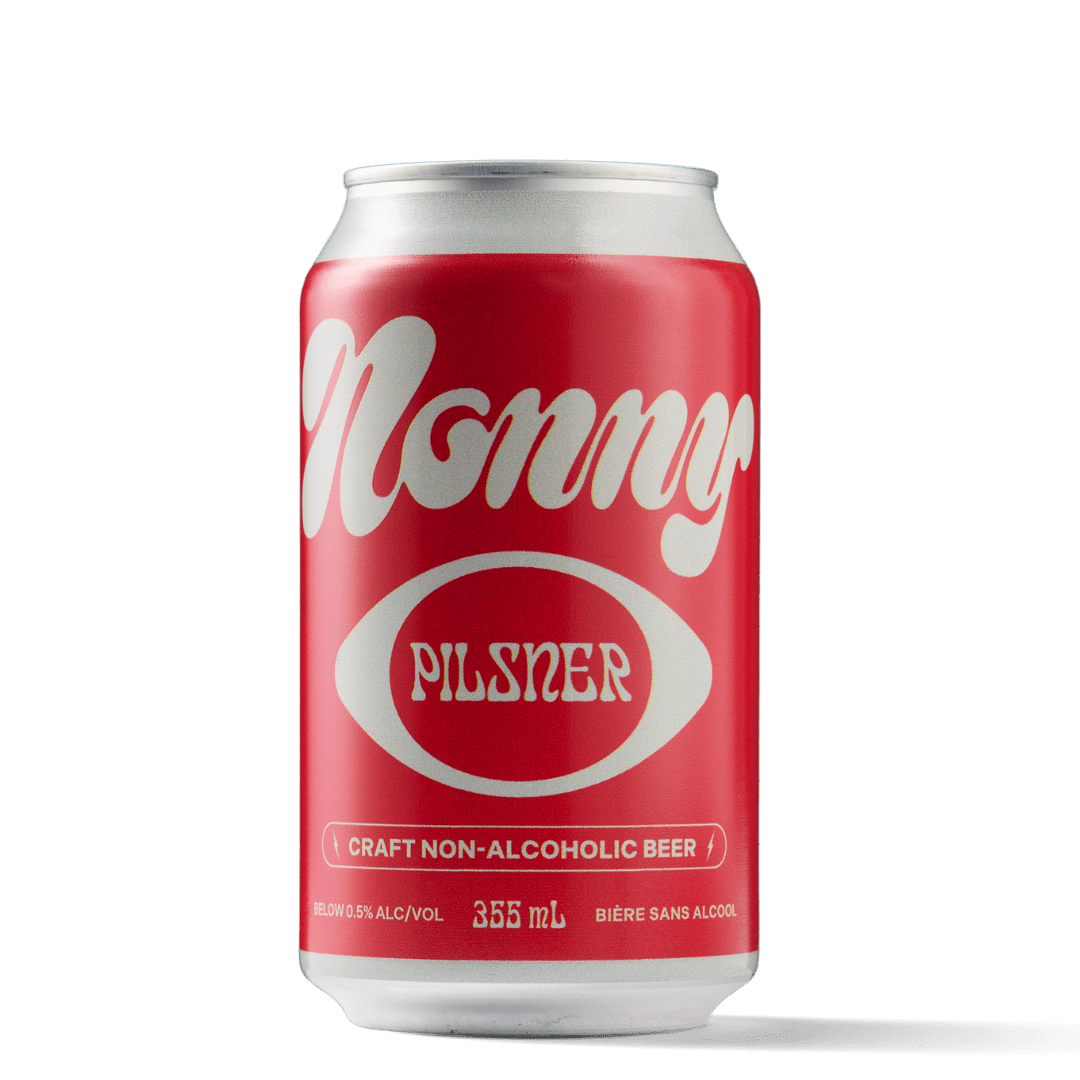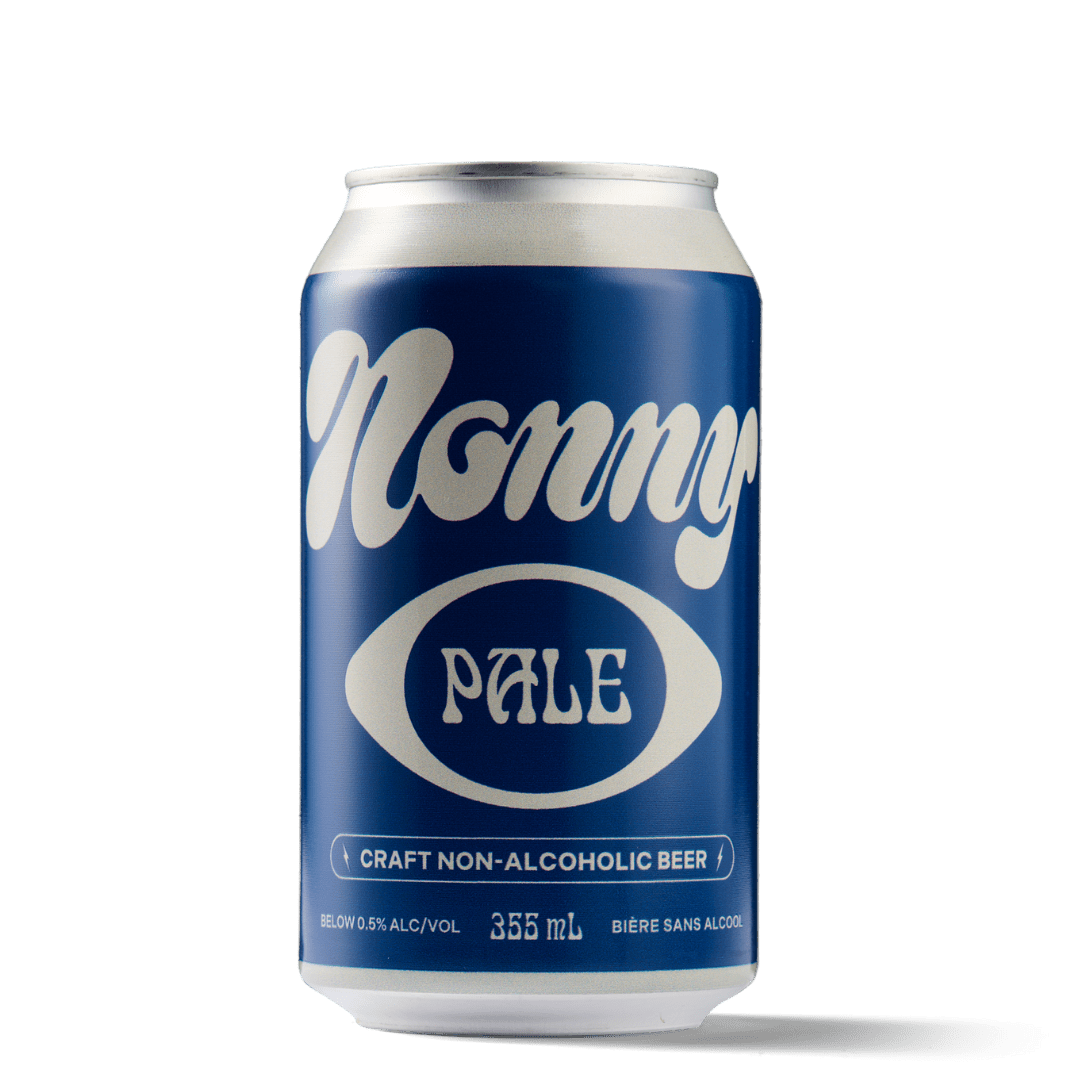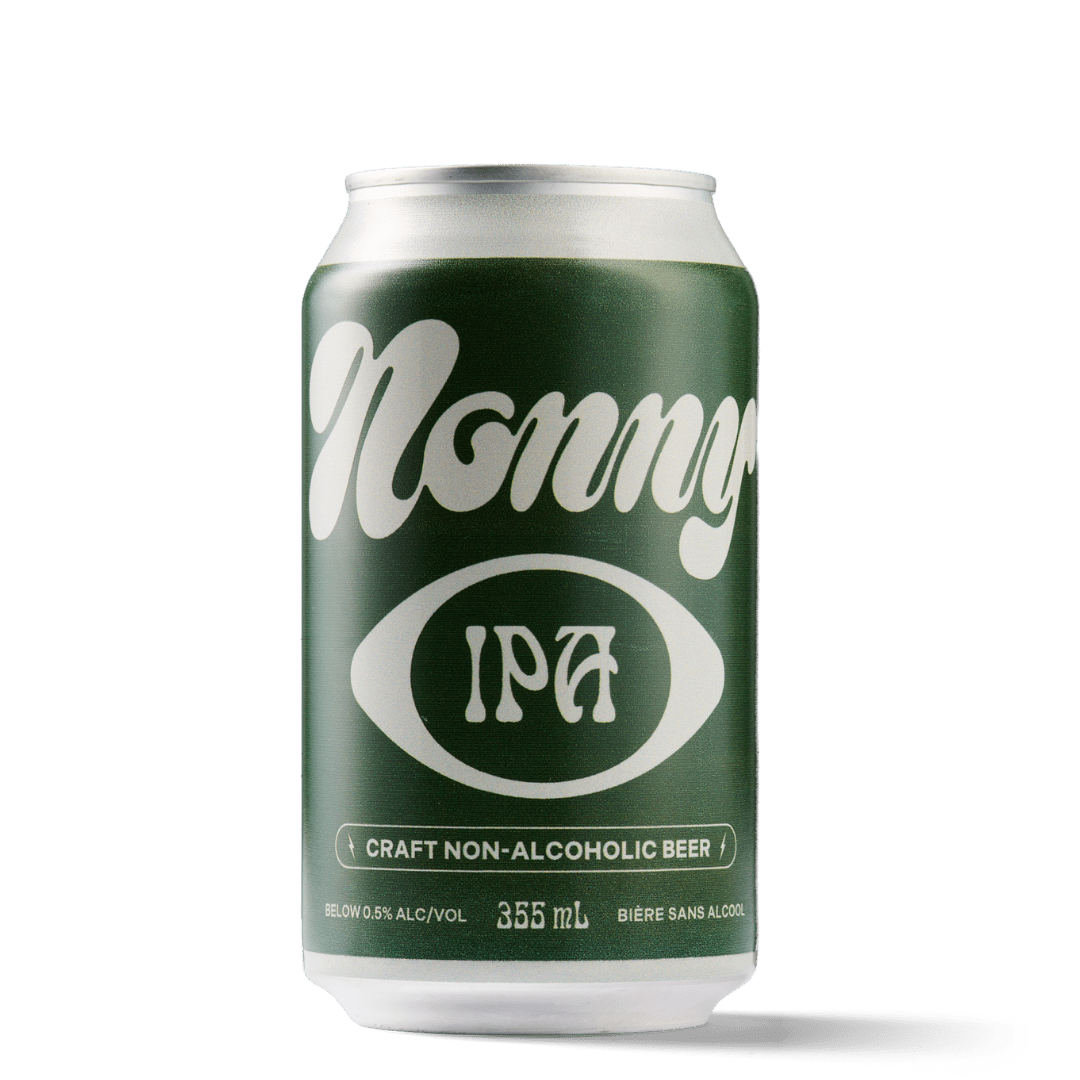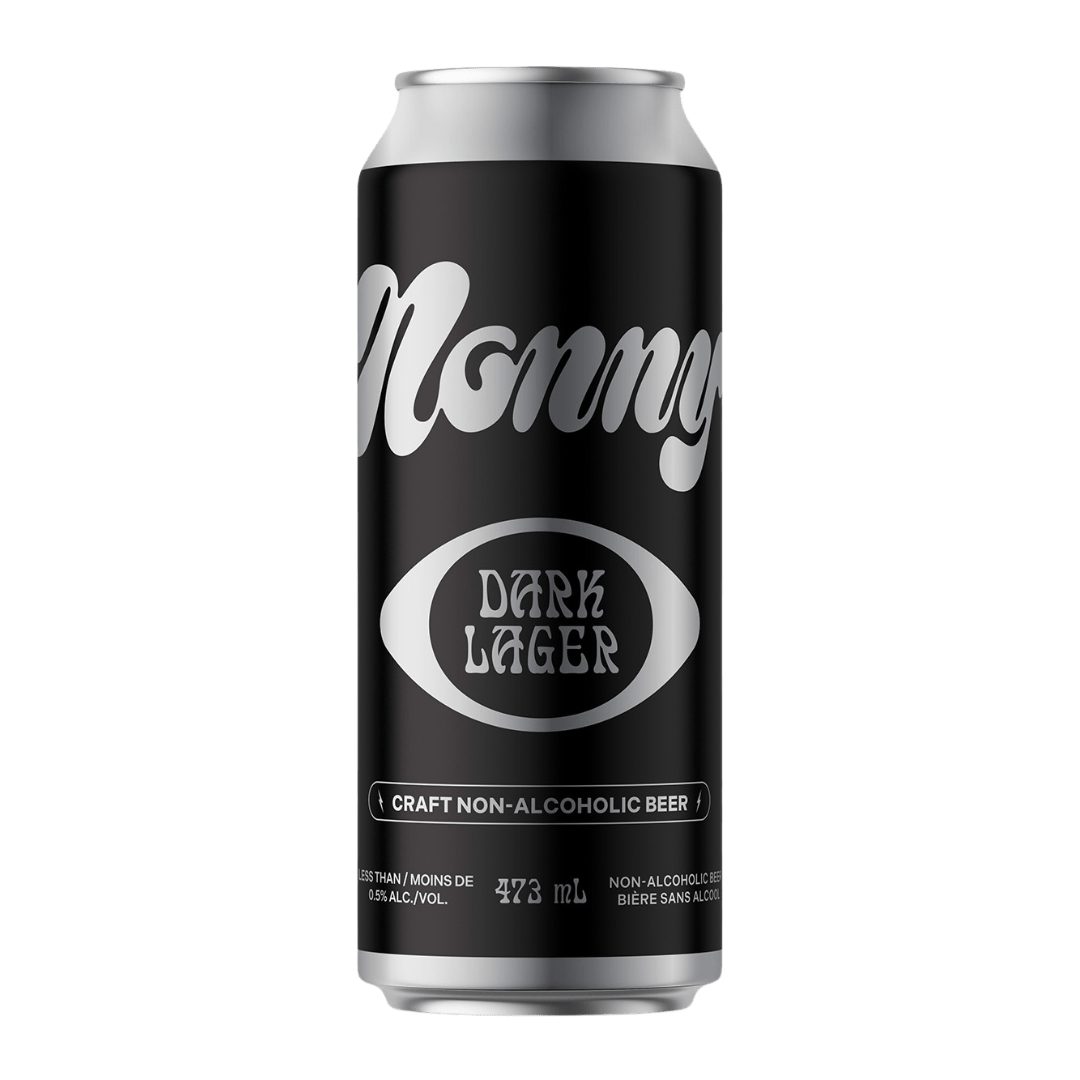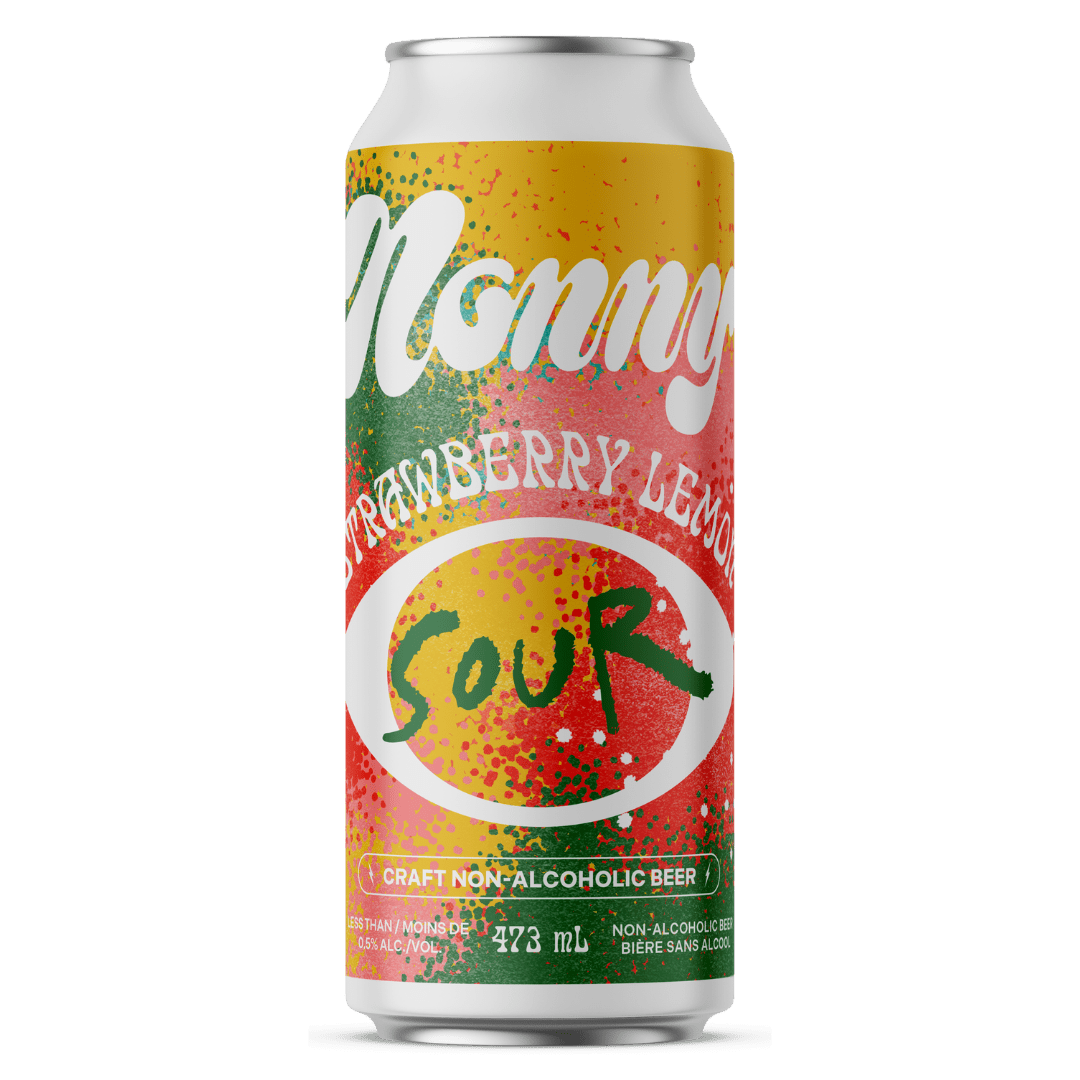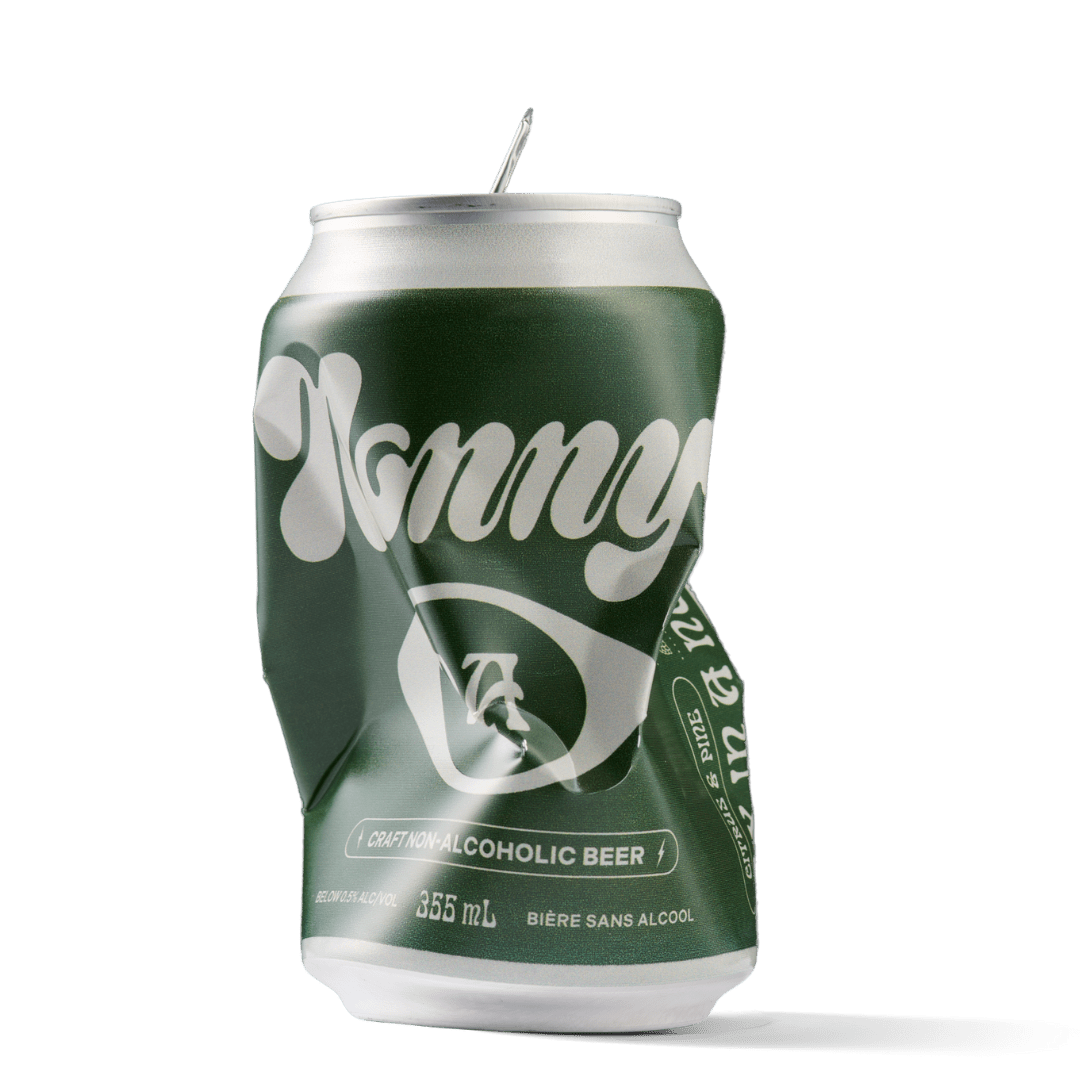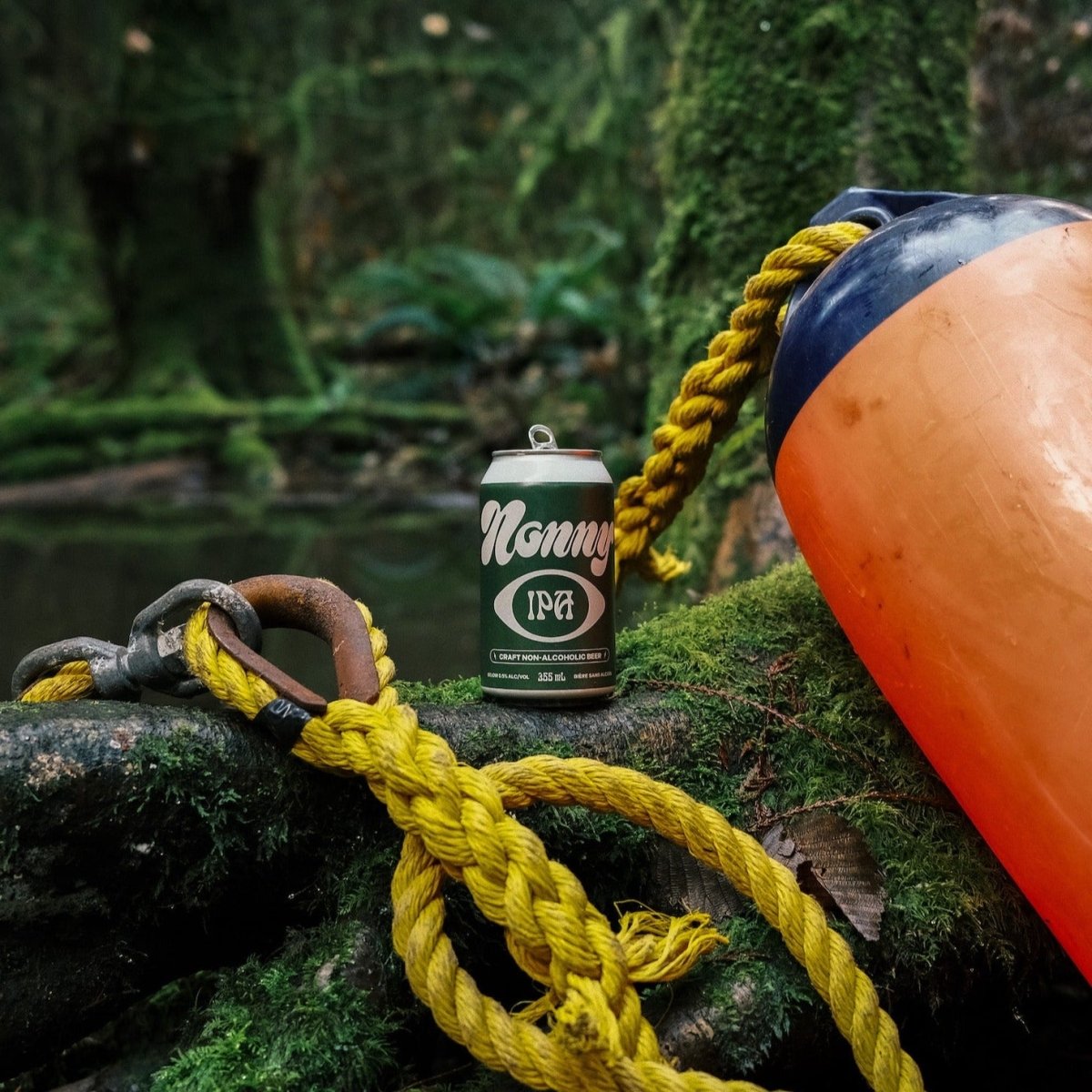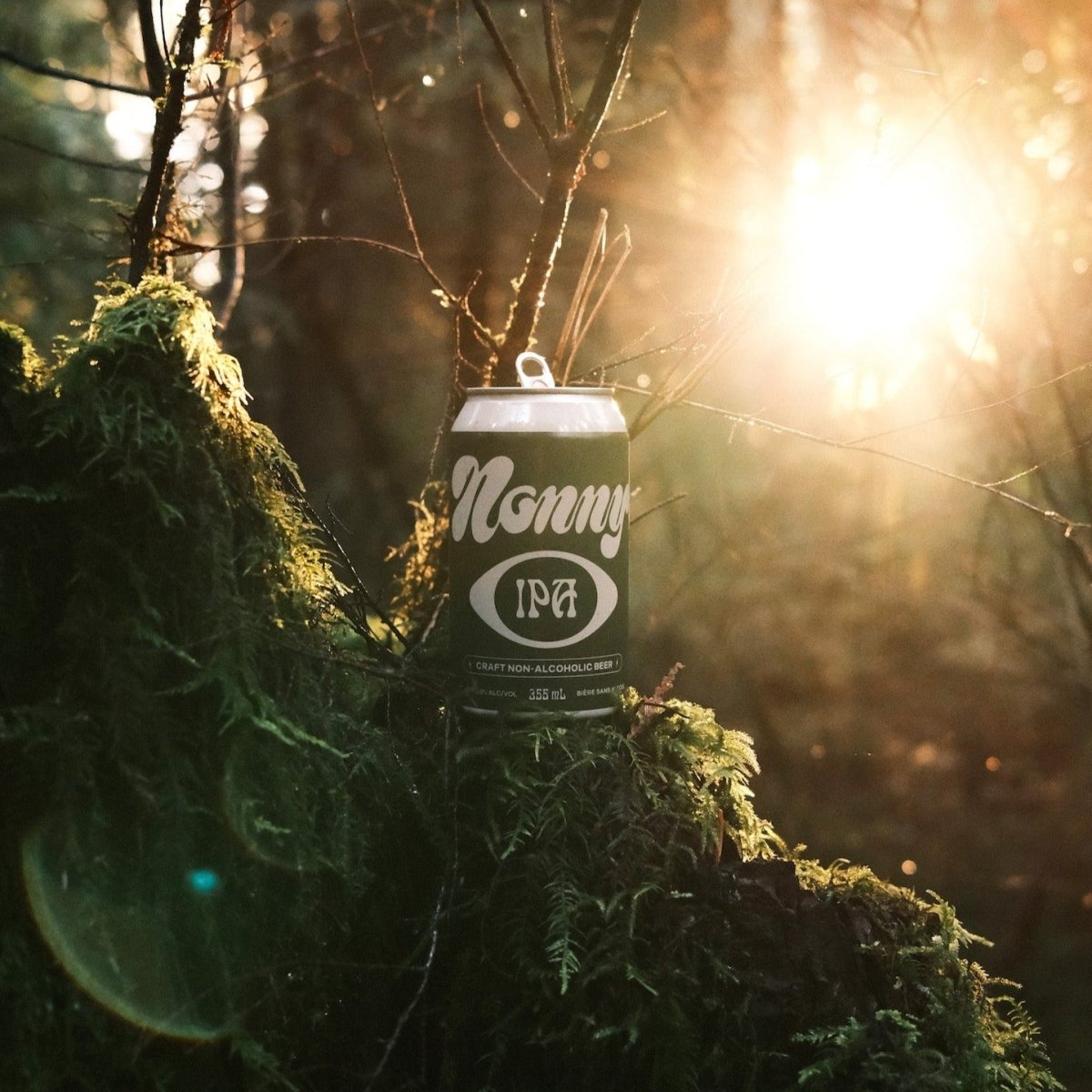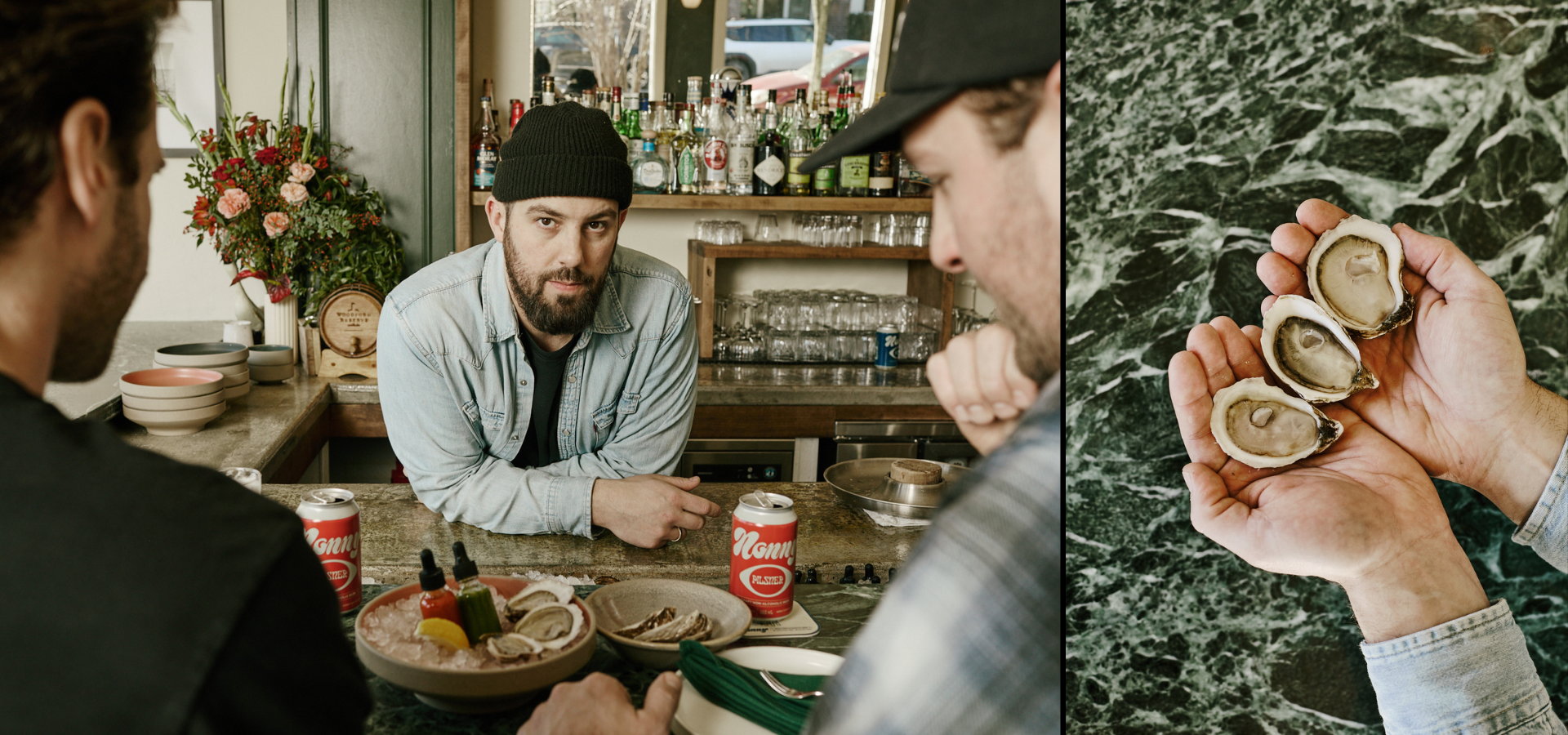
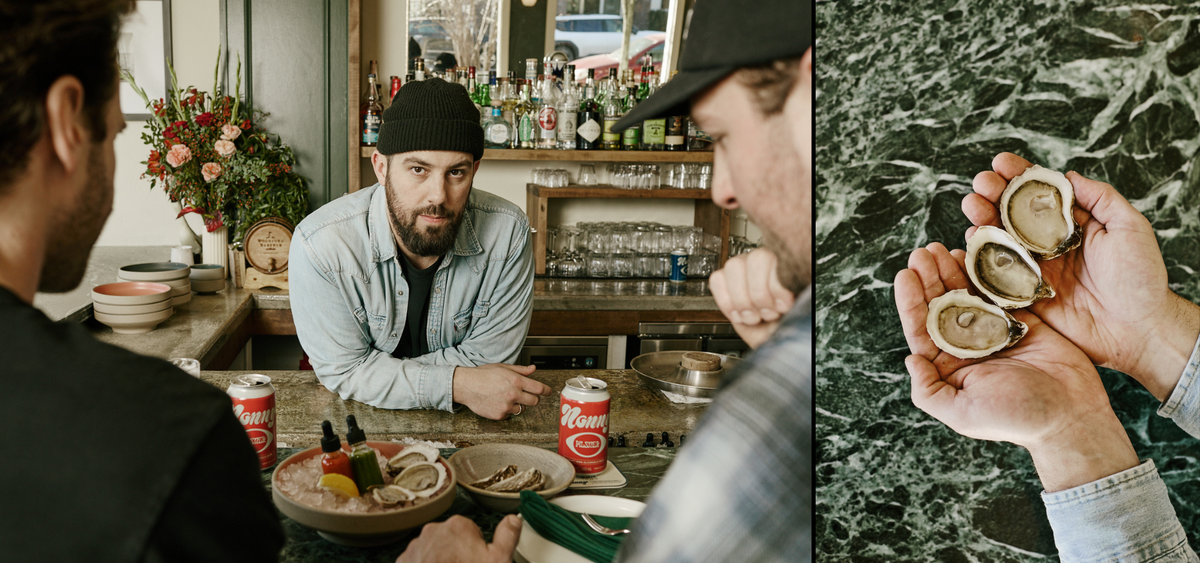
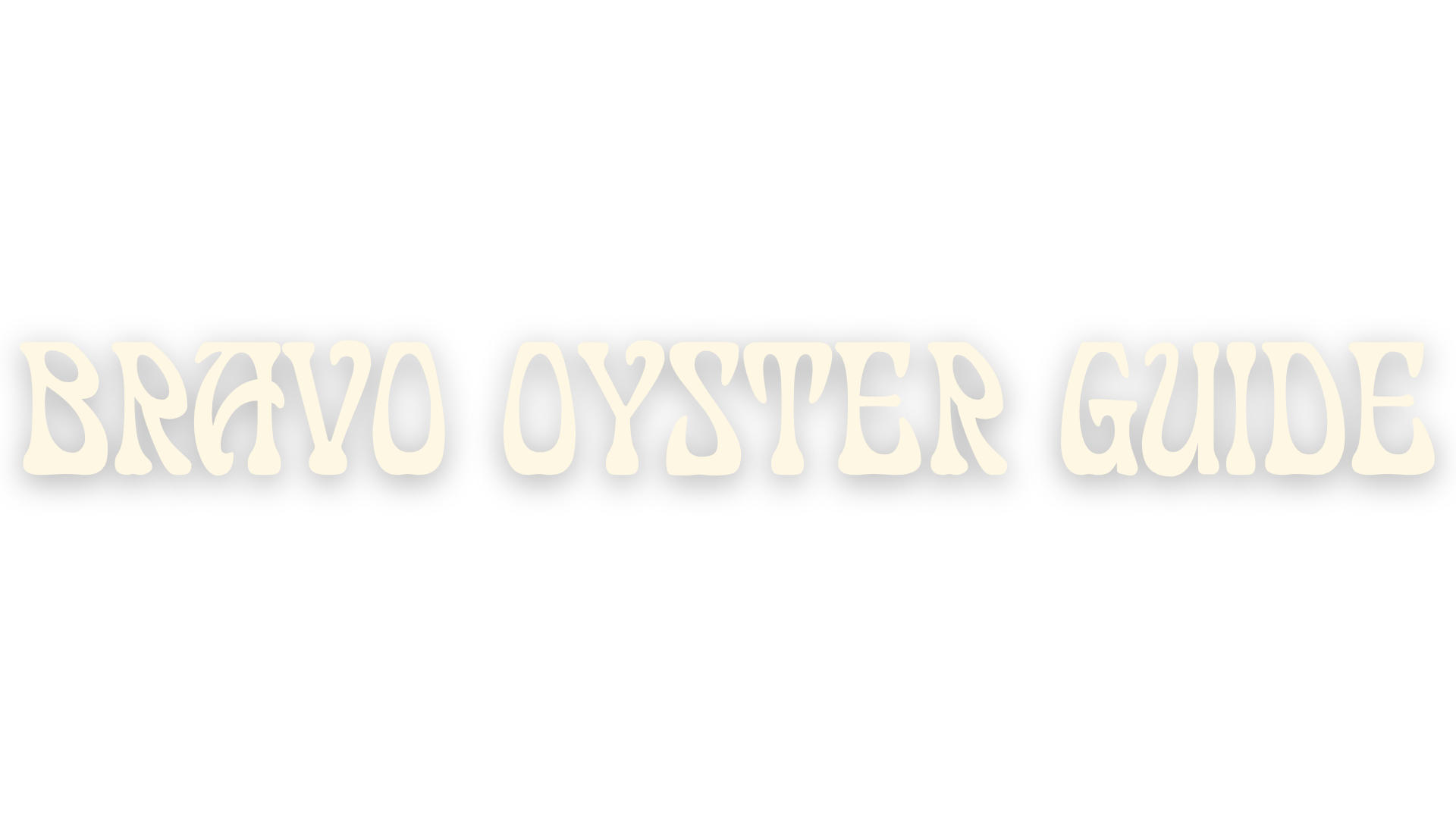
Nonny & Bar Bravo's Guide To Oysters -Vancouver's finest seafood
Words and photos by Grady Mitchell | Graphic design and illustration by Spencer Pidgeon
Bar Bravo, a beloved seafood spot in Vancouver’s Fraserhood, has won accolades from both local diners and esteemed critics, including the title “Best New Restaurant 2024” from Vancouver Magazine and even a nod from the Michelin Guide. And, most importantly, from us here at Nonny.
A warmly-decorated space with even warmer staff, Bar Bravo pairs a rotating seasonal menu of super-fresh and sustainably-sourced seafood dishes, both raw and cooked, with an elevated bar program including seafood-centric wines, cocktails, and of course, a few beers.
Recently Nonny pried Bar Bravo co-founder Jon Merrill out of his shell for a few photos and a quick chat. Don’t let his “ahh shucks” demeanour fool you, Jon is one of the best in the business, and we were keen to learn more about his history in seafood and what he’s got going on at Bravo.
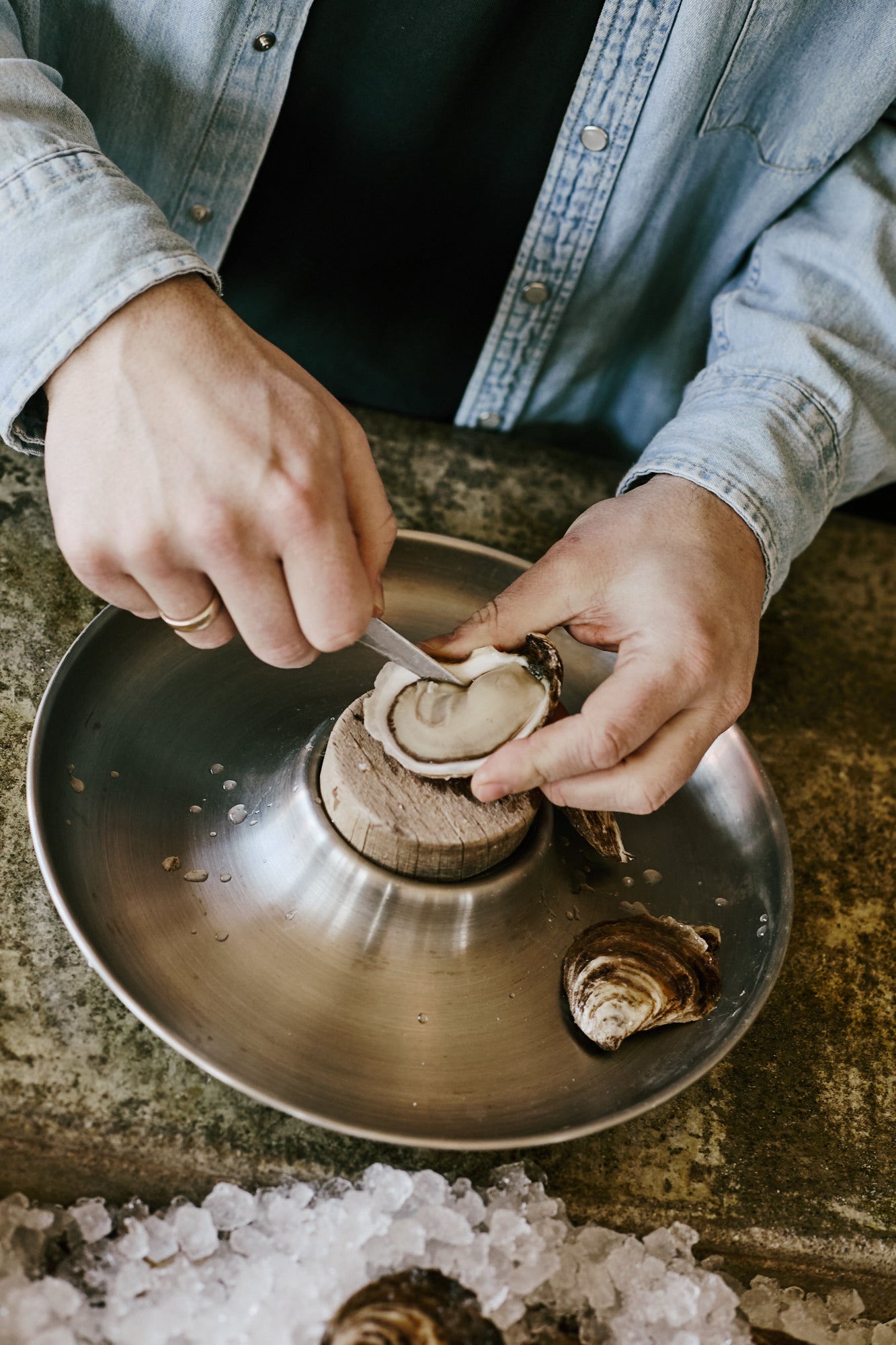
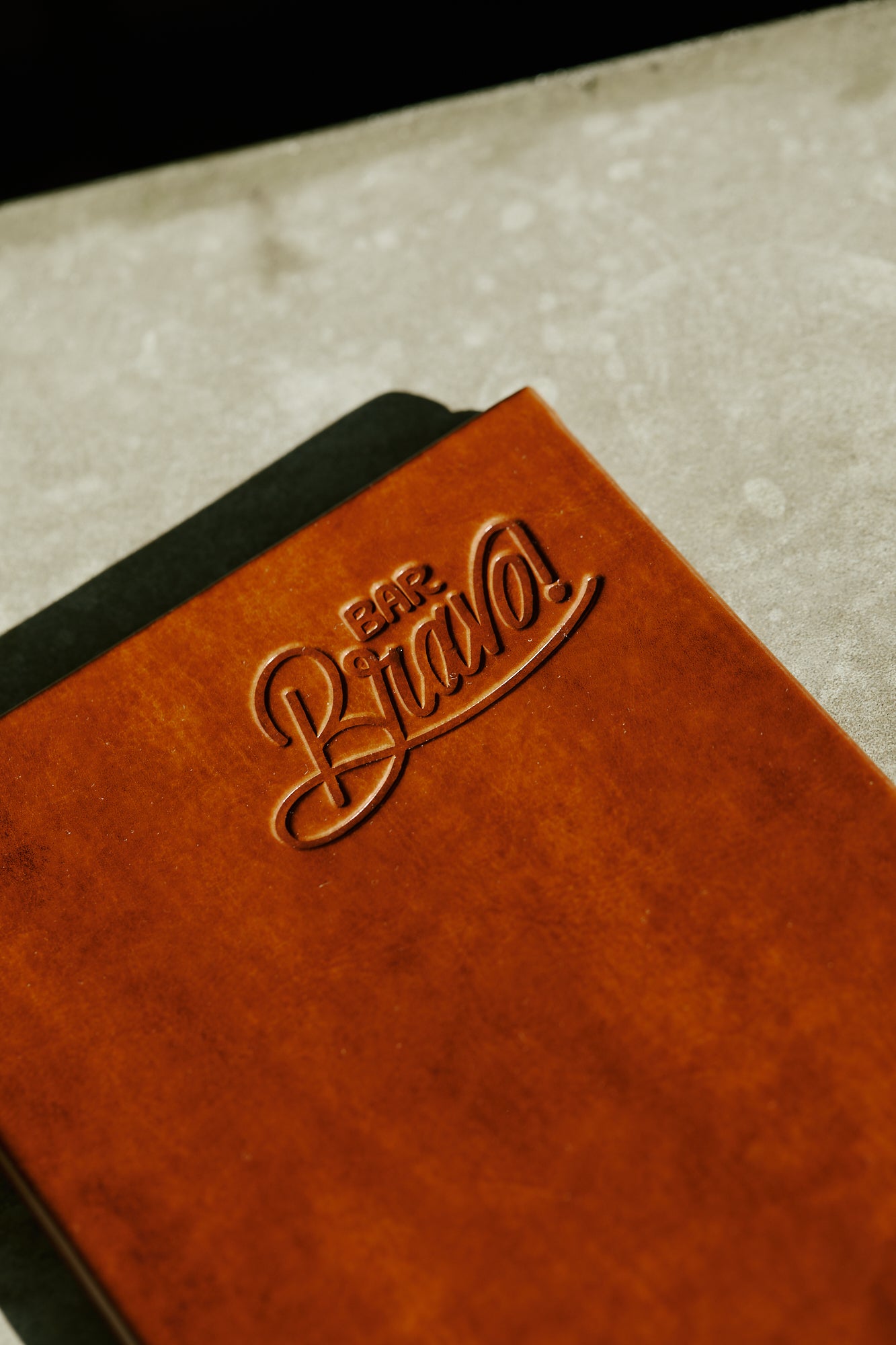
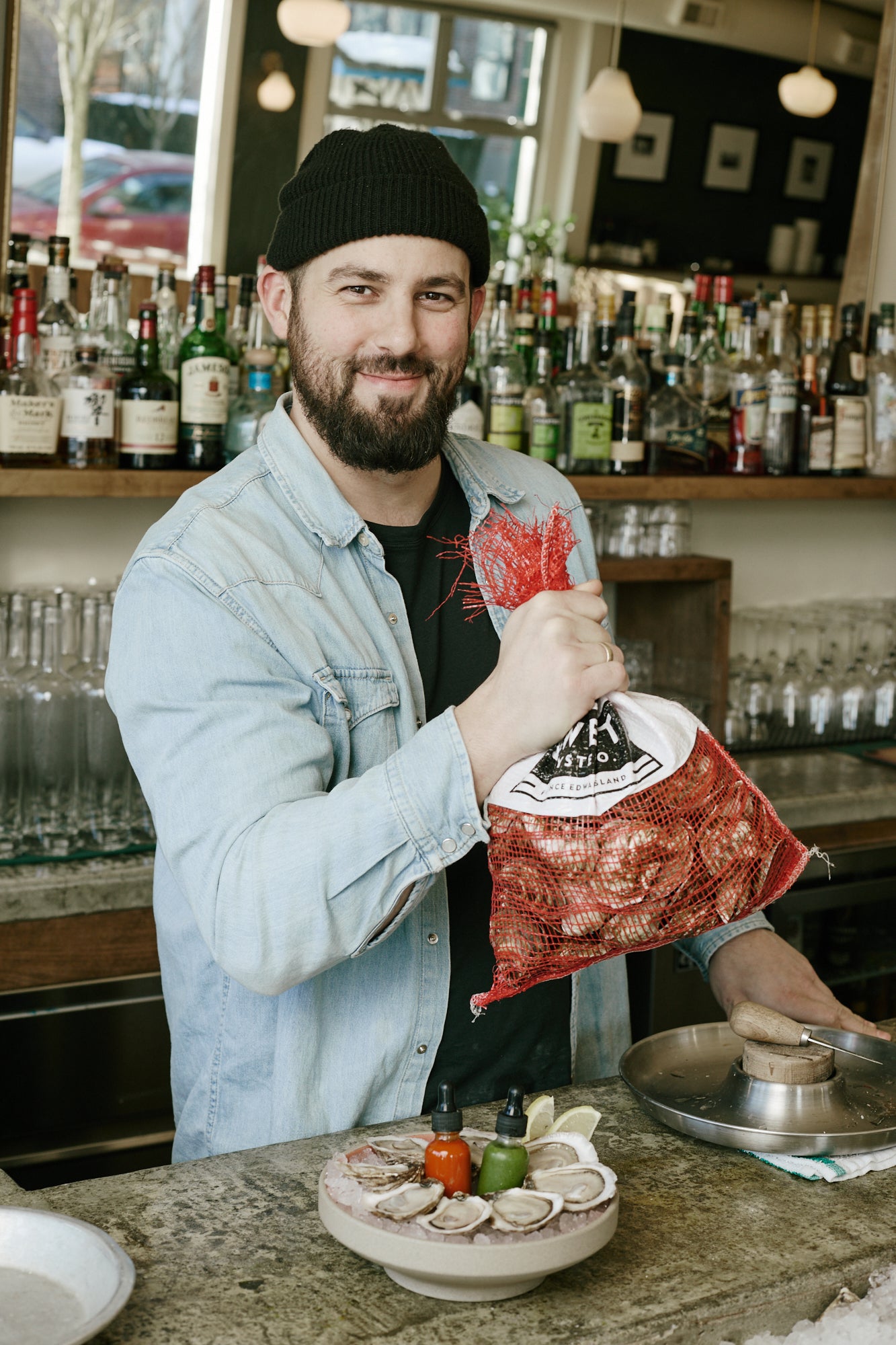
Slurpin' & Burpin' - The Nonny Guide to Oysters
Meet Jon Merrill - Bar Bravo's Oyster Boss
_____________________
Nonny: OK, so, what the hell is an oyster, anyways, biologically-speaking?
Jon: Oysters are saltwater bivalve mollusks, often found growing on reefs in coastal areas. They're filter feeders, and a true sustainable filter feeder.
Nonny: Oysters carry a lot of mysticism, what do you think makes them so special? Why do people consider them such a delicacy?
Jon: There's always something taboo about consuming raw products. Oysters are this beautiful thing, marrying different techniques from farmers all over the world and precision oyster shucking. It's a beautiful thing when it all comes together and they're enjoyed fresh straight from the ocean to your table. Oysters are a superfood packed with all the goods you need like fatty protein, zinc, selenium, vitamin b12, to name a few.
Nonny: Now for the hard-hitting questions: How many oysters would you guess you’ve shucked in your lifetime, and how many have you eaten in one sitting?
Jon: If I had to ballpark it I'd say I'm in the 3-5 million range. I've been shucking every week consistently since I was 21. The most in one sitting was 80. Still had room for about a 'baker's dozen' Guinness!
Grab a beer and read on 🦪
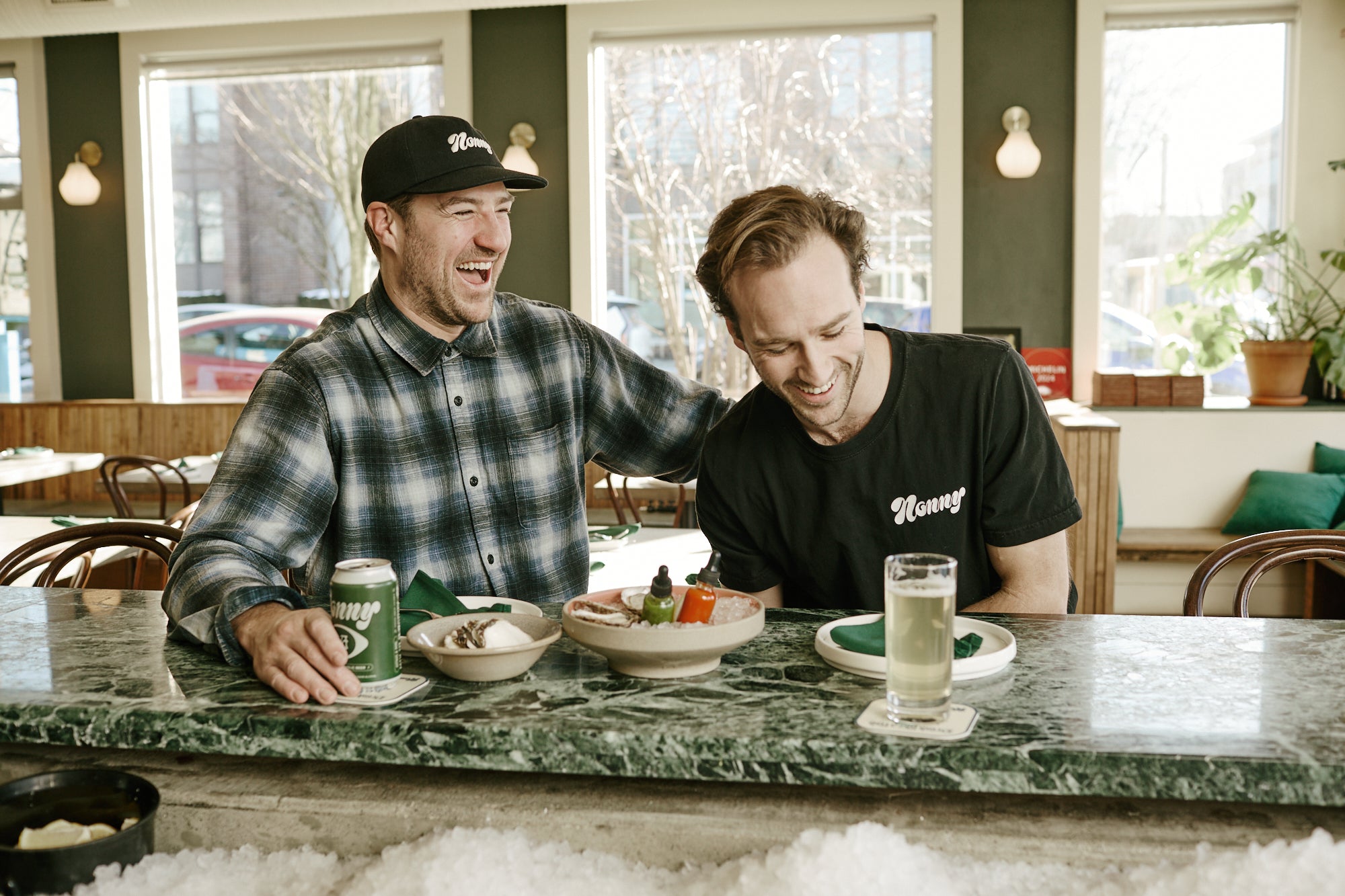
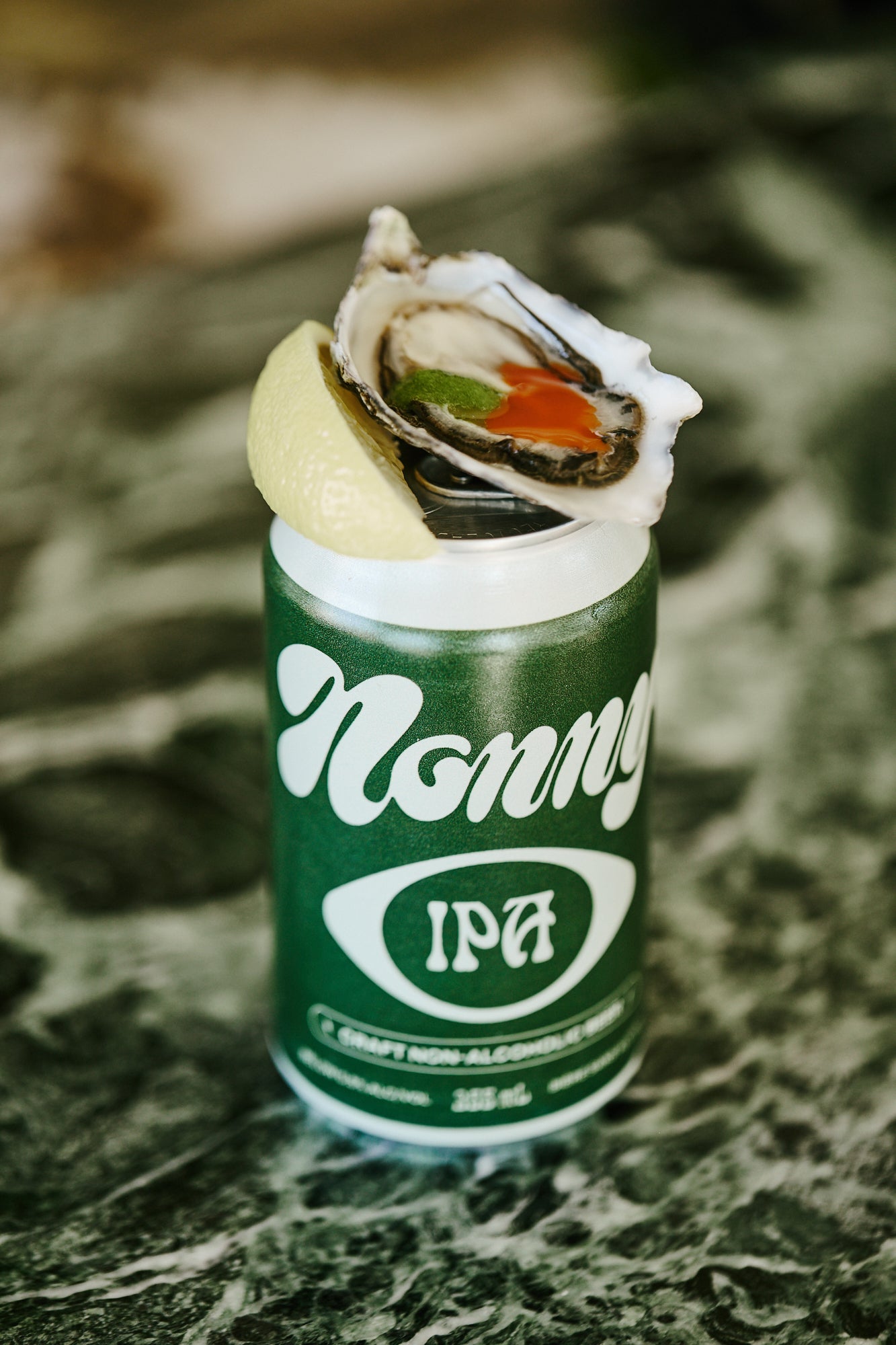
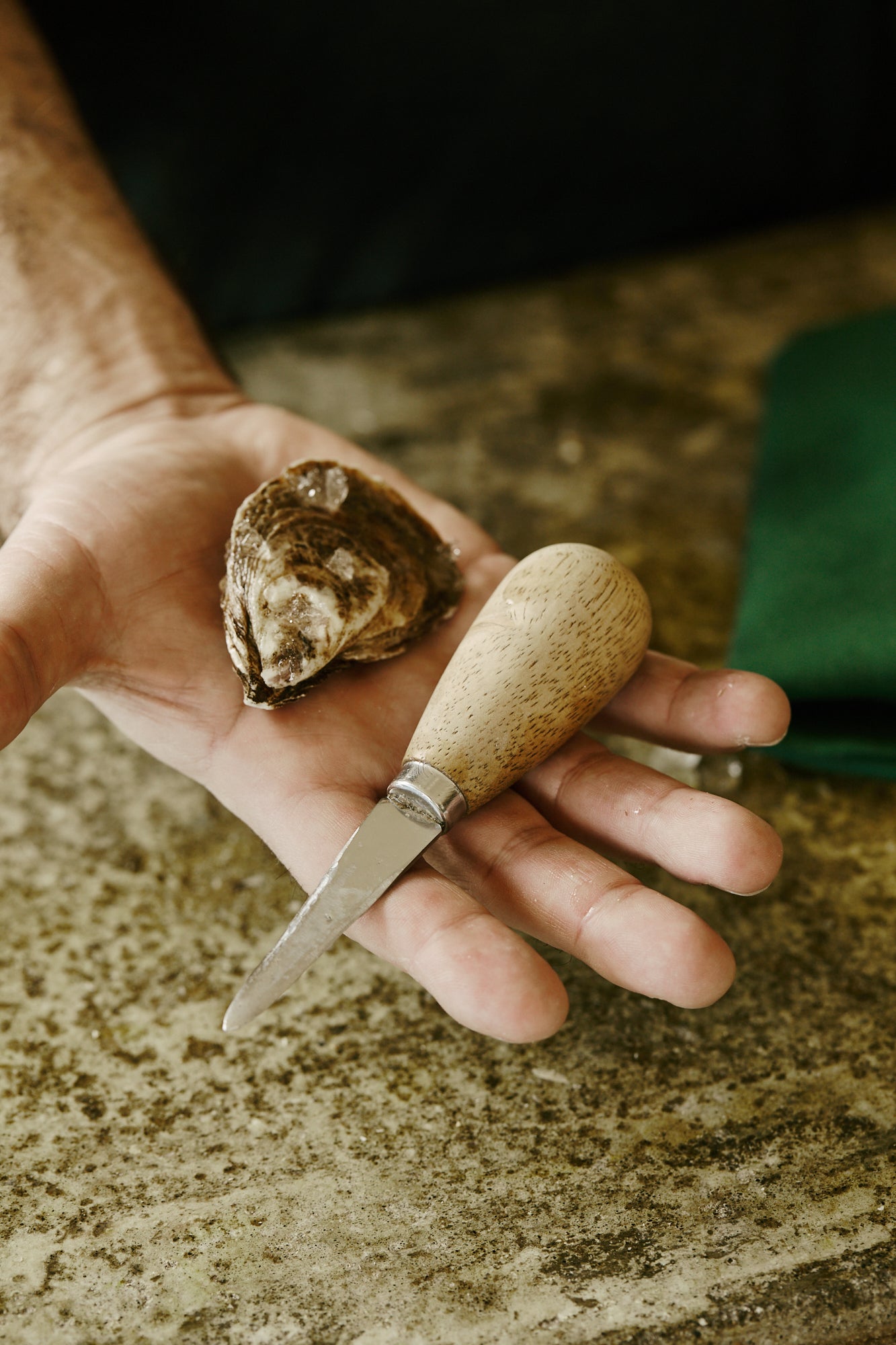
Nonny: Have you encountered any oyster shucking legends or folklore passed down through professionals—techniques, superstitions, or local traditions?
Jon: I don't think there's an industry with more characters and personality than the oyster world. From the farmers to the shuckers and everyone in between. Oyster competitions around the world are where we all come together, share some laughs, and really get loose. The parties are legendary so I highly recommend making a point of attending one in the maritimes at some point in your life. As far as legends go, Rodney's Oyster House in Toronto, to me, is where the buck stops. Rodney Clark is kind of the godfather of the scene and the Oyster House has bred some of the greatest all time beauties out there. From Stafford Lumley at Smitty's Oyster Bar in Gibsons, BC, the late great John Bill, and the GOAT himself Eamon Clark (10x Canadian Champion and lover of all good times related things).
Nonny: OK, you’ve mentioned some big names in Canadian oysters, but what about you? How did you come up in the bivalve world?
Jon: I'm pretty much only good for one thing and that's shucking oysters. I grew up in Nova Scotia so they were always around in abundance. I really got started with oysters at Rodney’s in Yaletown. I got poached from the Cactus Club and was just totally blown away by the vibe and east coast hospitality. The real passion happened when I moved over to Rodney’s in Toronto. It's family-run and you really feel like you're part of something special there. The staff are from all walks of life, there's a real care for the product that's brought in and the company allows you to be fully immersed in the seafood world. From there I worked at the Drake Hotel in Toronto, was part of the opening team of both Chewies Oyster Bar locations, made a brief stop slinging cocktails at the dearly missed Trans Am in East Van, and went back for a final stint at Rodney’s Yaletown.
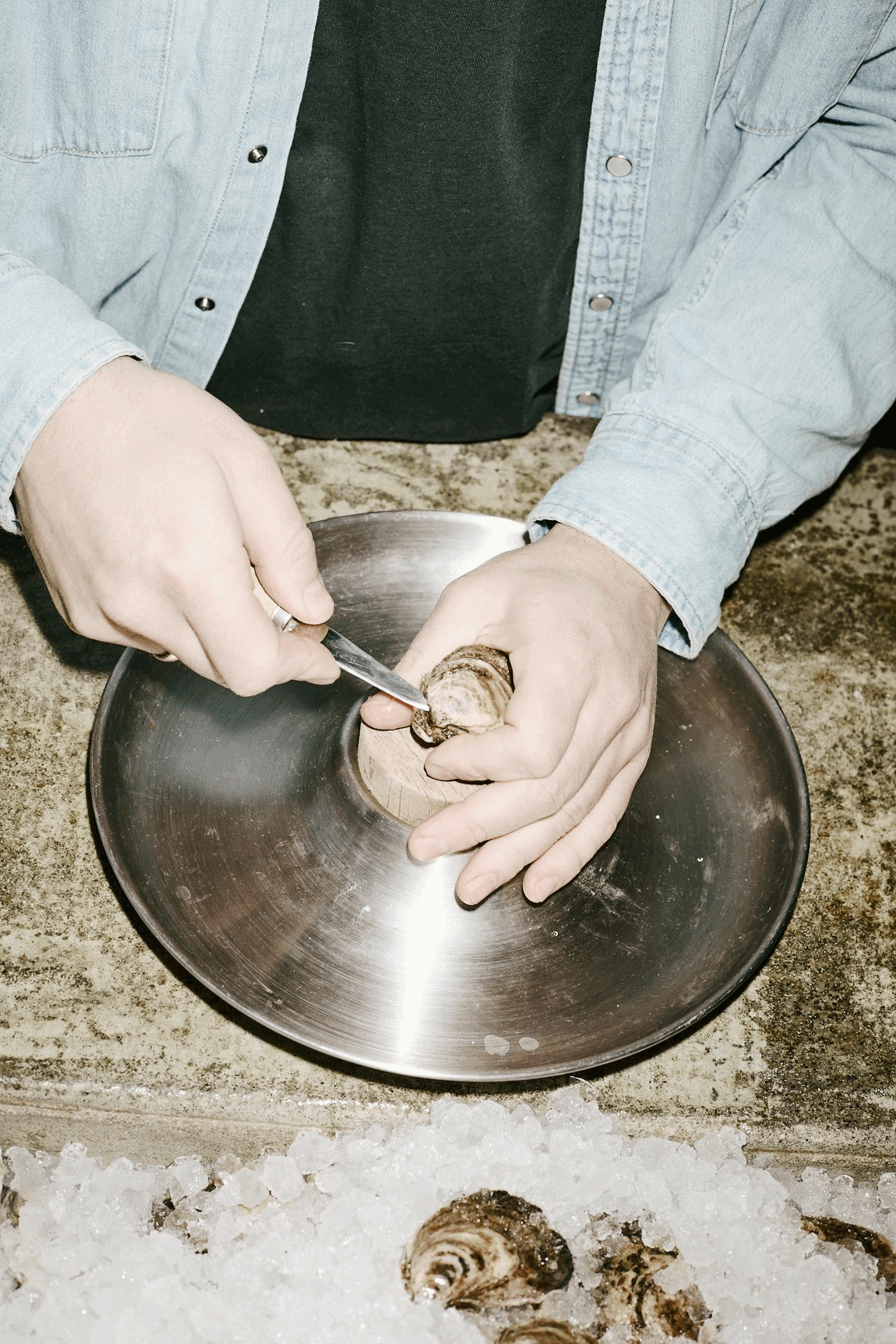
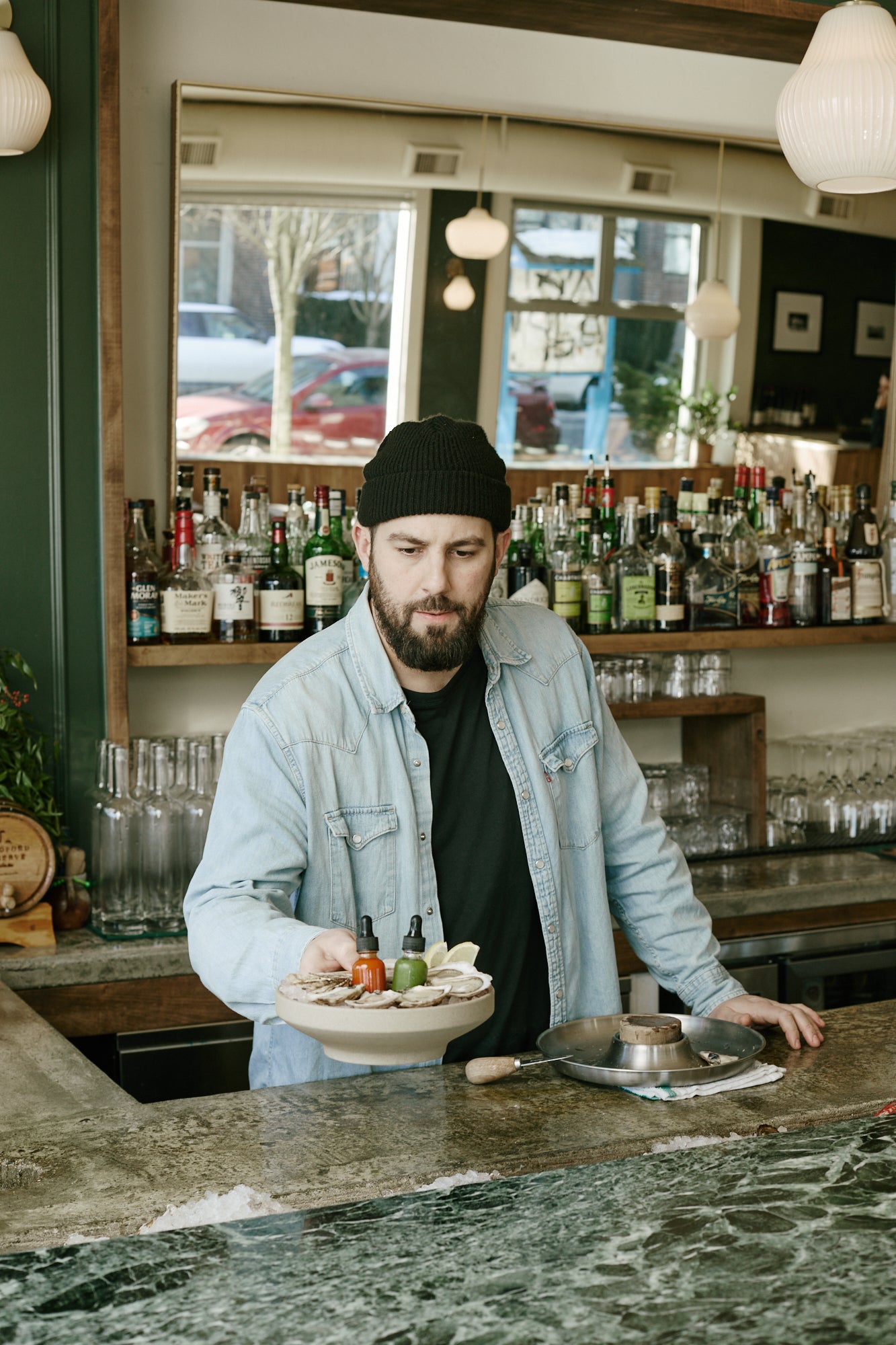
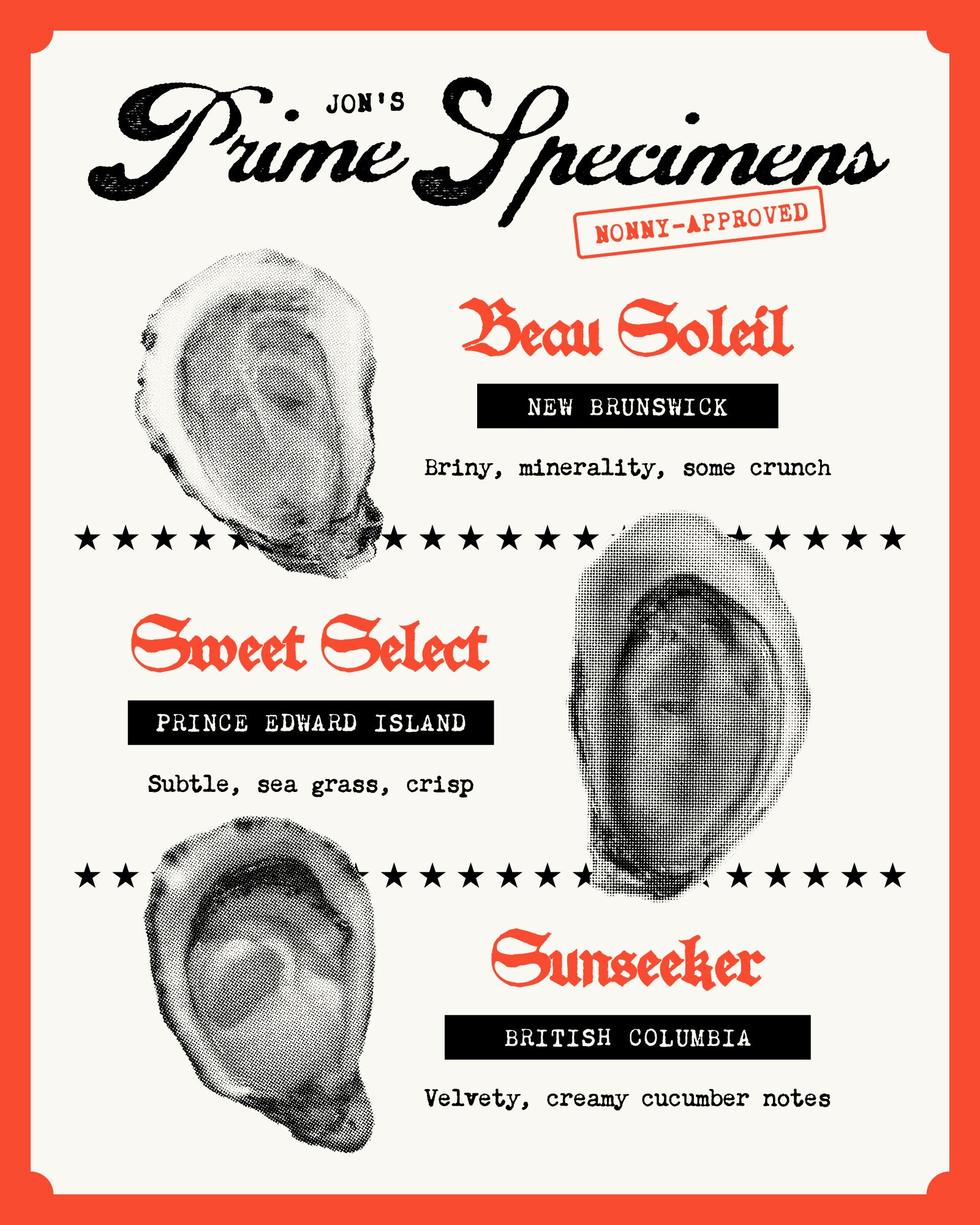
Nonny: You’ve talked about a lot of famous oyster spots, now it’s time to brag about your own. What can you tell us about Bravo? What sets it apart and earned love from both diners and Michelin?
Jon: Our team is super diverse and blends a mix of polished service and warm, maritime hospitality. We want everyone that walks through our doors to feel like a friend and part of something cool.We're not reinventing the wheel, we just wanted a pescatarian-focused menu using the best seasonal product available, served in a cool room with a great vibe. Our staff are what carries us. They love what they do and they care. We can't ask for much more than that. Obviously our kitchen is incredibly talented. Chef Jonah has assembled an awesome team of humans with their own unique skill set and the food they produce is far beyond anything I had conceptualized.
Nonny: How does your team source oysters? What are you looking for and where do you look for it?
Jon: We just try to source the best product we can get from coast to coast in Canada. We have great personal relationships with our suppliers (Fanny Bay, Wild & Live, etc.) and they keep us in the know on what's in season and looking great.
Nonny: How about the three oysters from our shoot, what can you tell us about them?
Jon: We opened Beau Soleils from New Brunswick, Sweet Selects from PEI and Sunseekers grown by the Fanny Bay team here in BC. Your east coast virginica species (Beaus & Sweets) tends to be more on the briny side, higher minerality and more crunch. The pacific gigas (Suns), which are native to our waters, have more of a velvety bite, less brine, and cream and cucumber notes.
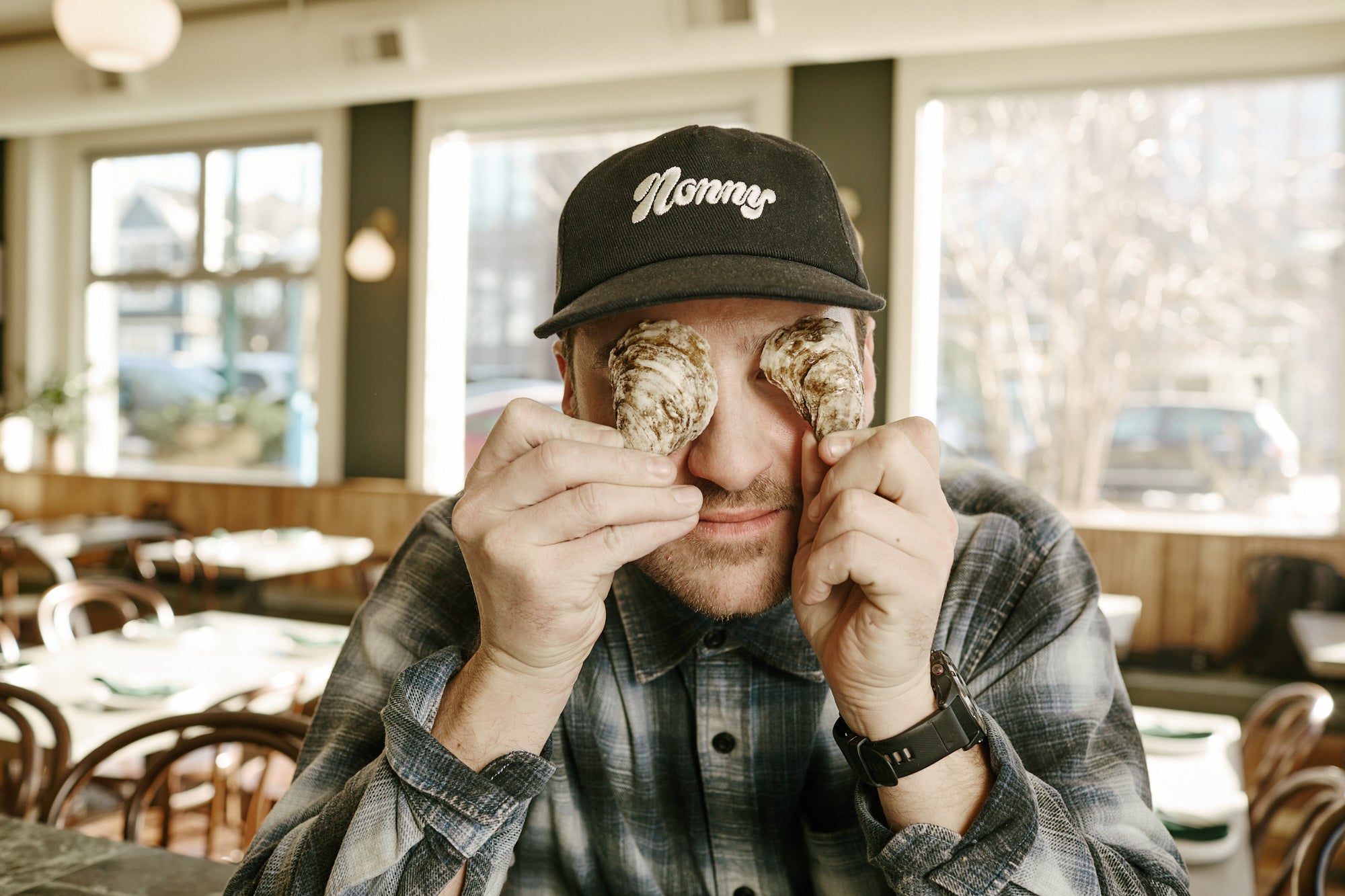
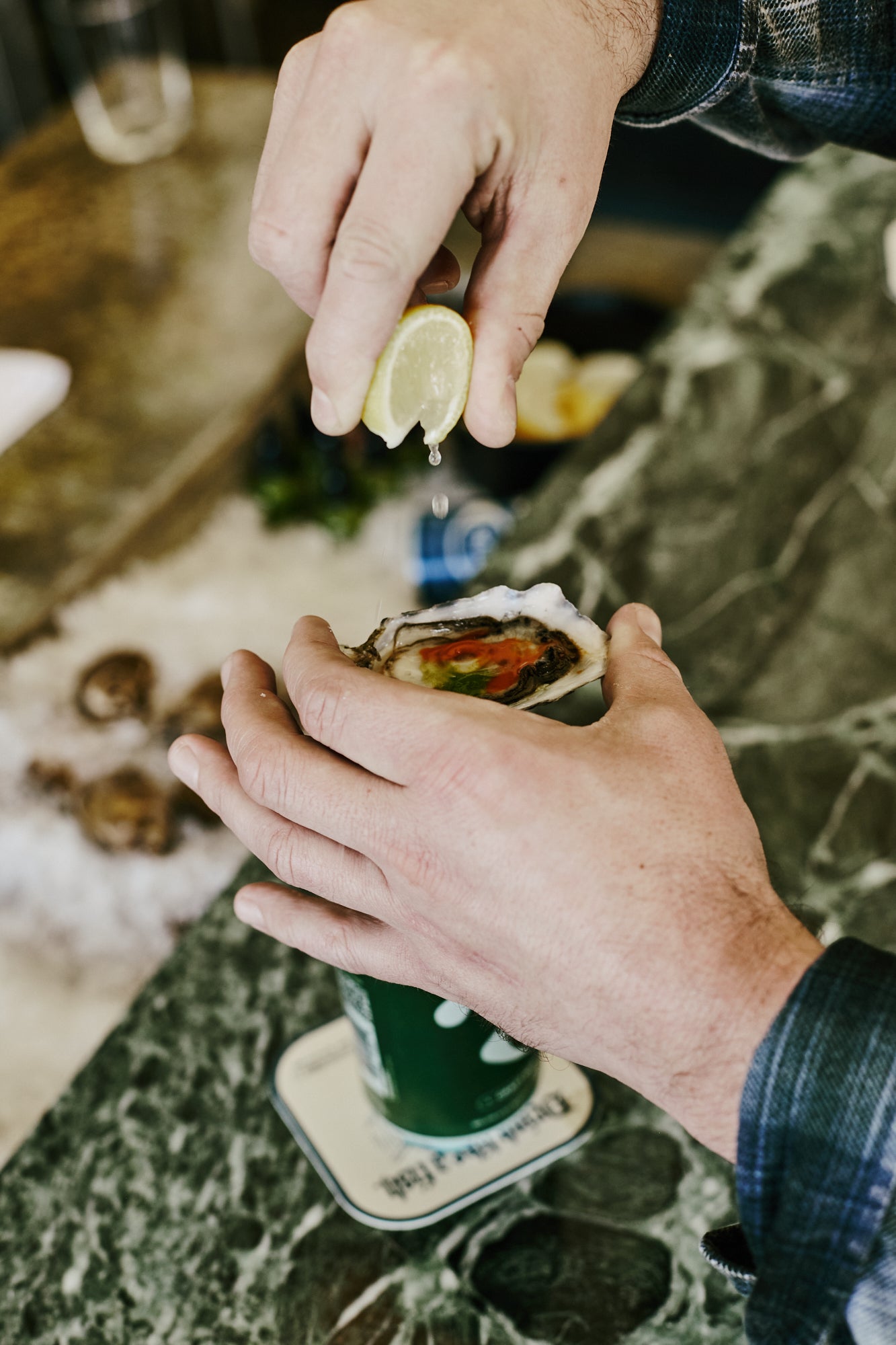
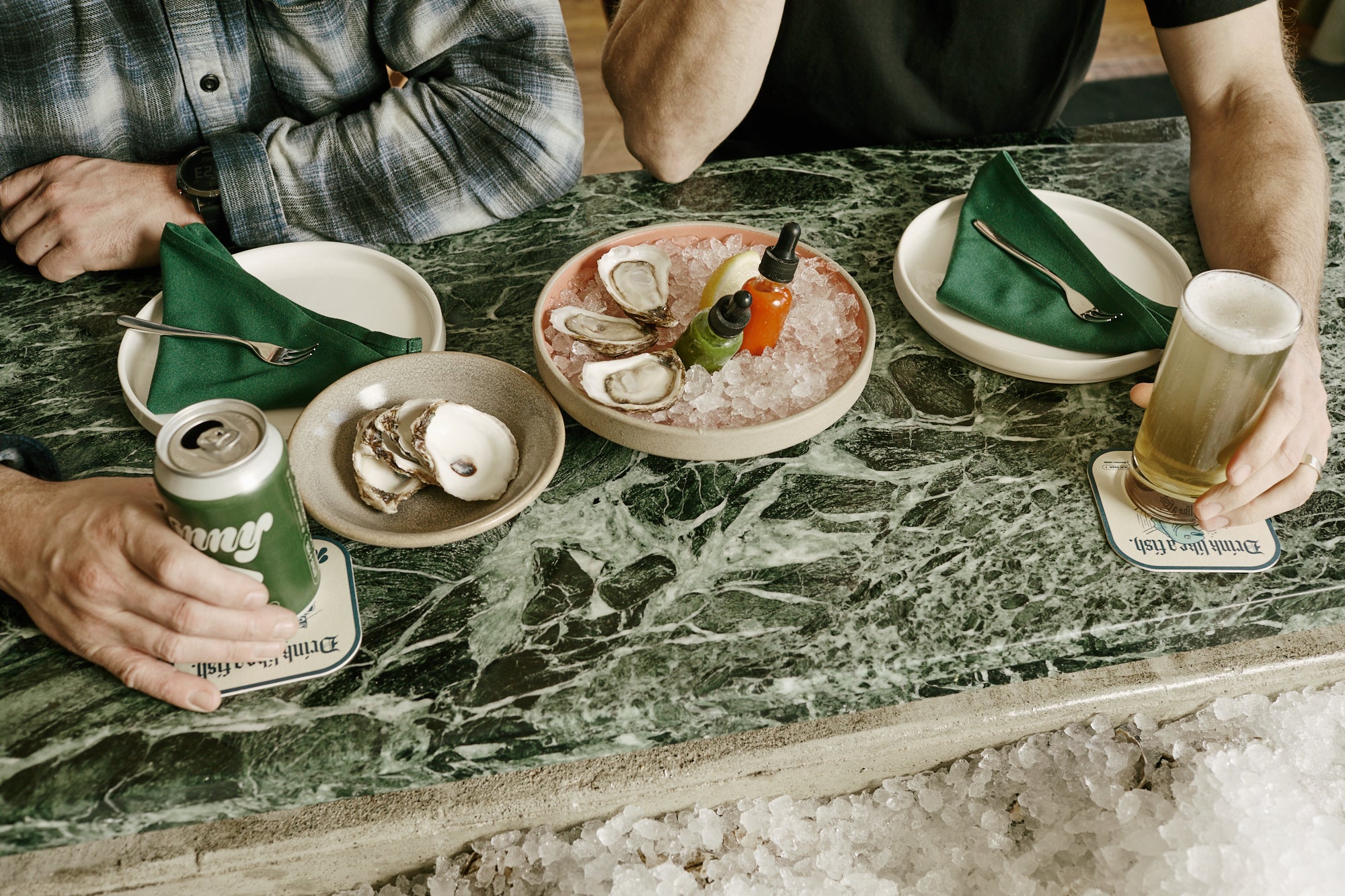
Nonny: Since you’ve done it a couple million times, can you give some quick beginner tips on how to shuck with both panache and safety?
Jon: First and foremost, take your time. It's easy to bury a knife in your hand. We've all done it. You also don't want to be chomping on shell and grit. Speed is great when you've got the experience but enjoying freshly shucked oysters is far better from the comfort of your home than after spending a few hours at the emergency room. The oysters should present like you simply flicked the top shell off. Don't flip the meat. You're simply hiding from your mistakes and any good shucker can spot it. Lastly, don't be a hero. Use a rag to protect yourself from the blade popping through the shell. Other than that, practice makes perfect, so once you've opened up a couple hundred thousand you should be getting okay at the craft!
Nonny: And once you’ve got it open, what are some of your favourite ways to enjoy them?
Jon: I always encourage eating the first few raw. You want to taste them. If you smother them in condiments you're not taking in their distinct flavour profiles. A little lemon is good to cut through the brine. Some freshly grated horseradish is nice to add some spice and texture. The only time I cook an oyster is during the summer months and I'm picking them off the shore myself. Fire those bad boys on the bbq. Toss on some butter, garlic, herbs, and peppers for spice. Crack some suds and enjoy.
Nonny: Anything exciting coming up at Bravo you’d like to highlight?
Jon: We'll be running a feature dressed oyster every week starting in April. We'll highlight a different oyster each week and make a unique topping that compliments the different flavour profiles.
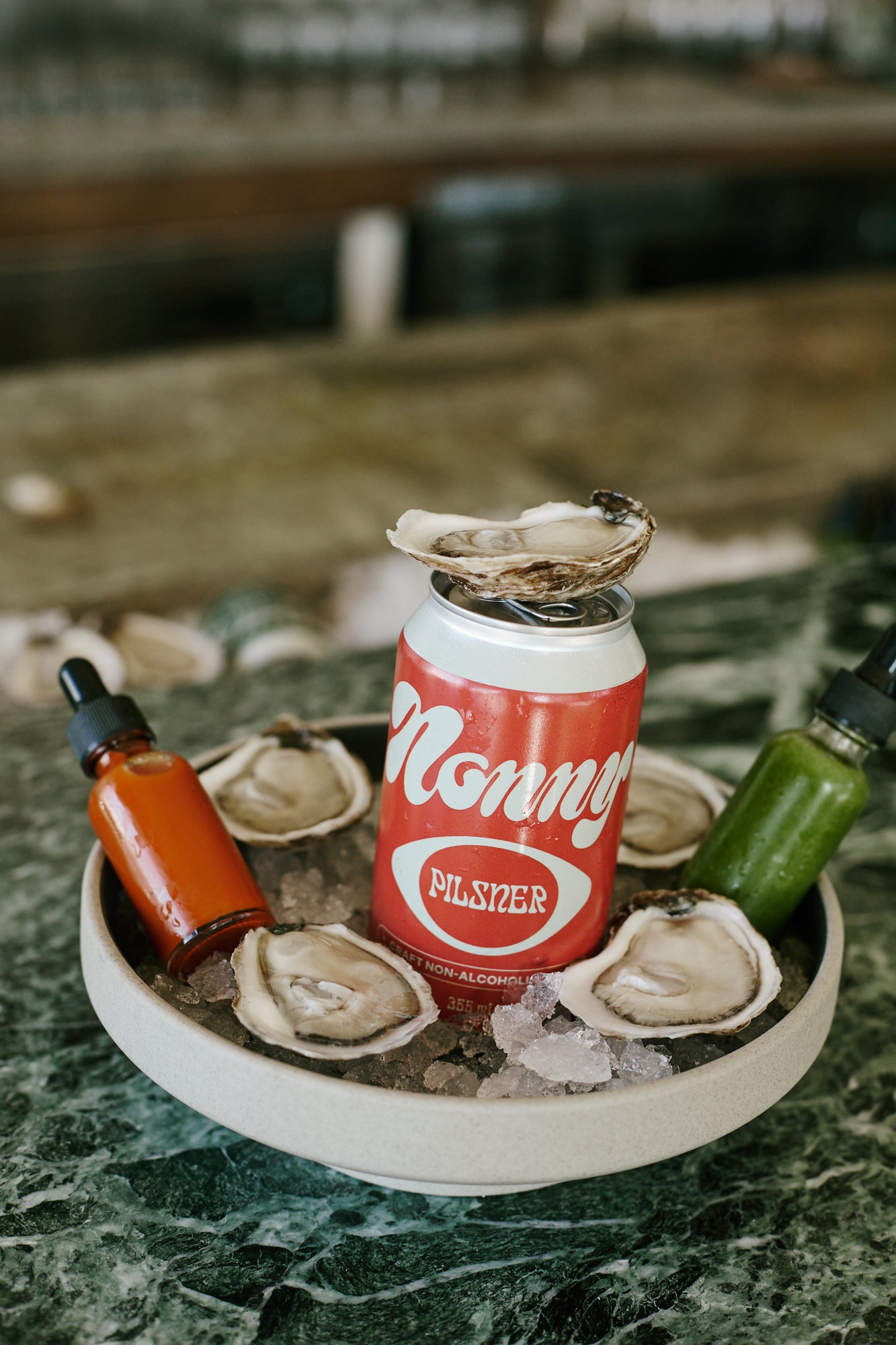
Thank You
Blog written and photographed by Grady Mitchell - @gradymitchell, www.gradycmitchell.com
Special thanks to Jon Merrill and the staff at Bar Bravo.

